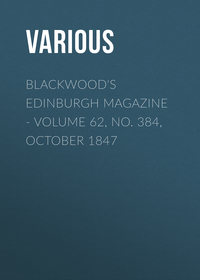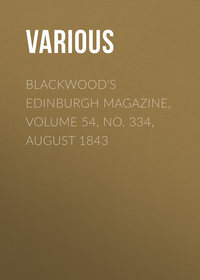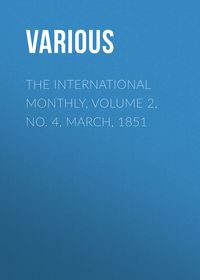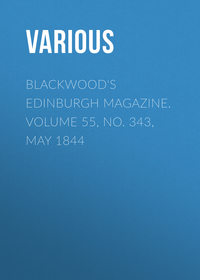 полная версия
полная версияHarper's New Monthly Magazine, Vol. IV, No. 19, Dec 1851
The industry and enterprise of Boston was crushed when, on the first of June, the Port Bill went into operation; but her voice of wail, as it went over the land, awakened the noblest expressions and acts of sympathy, and the blow inflicted upon her was resented by all the colonies. They all felt that forbearance was no longer a virtue. Ten years they had pleaded, petitioned, remonstrated; they were uniformly answered by insult. There seemed no other alternative but abject submission, or open, armed resistance. They chose the latter, and thirteen months after the Boston Port Bill became a law, the battle at Lexington and Concord had been fought, and Boston was beleaguered by an army of patriots. The Battle of Bunker Hill soon followed; a continental army was organized with Washington at its head, and the war of the Revolution began. Eight long years it continued, when the oppressors, exhausted, gave up the contest. Peace came, and with it, Independence; and the Republic of the United States took its place among the nations of the earth.
How conspicuous the feeble Chinese plant should appear among these important events let the voice of history determine.
THE AMERICAN ARCTIC EXPEDITION
The safe return of the Expedition sent out by Mr. Henry Grinnell, an opulent merchant of New York city, in search of Sir John Franklin and his companions, is an event of much interest; and the voyage, though not resulting in the discovery of the long-absent mariners, presents many considerations satisfactory to the parties immediately concerned, and to the American public in general.
In the second volume of the Magazine, on pages 588 to 597 inclusive, we printed some interesting extracts from the journal of Mr. W. Parker Snow, of the Prince Albert, a vessel which sailed from Aberdeen with a crew of Scotchmen, upon the same errand of mercy. That account is illustrated by engravings; and in his narrative, Mr. Snow makes favorable mention of Mr. Grinnell's enterprise, and the character of the officers, crew, and vessels. We now present a more detailed account of the American Expedition, its adventures and results, together with several graphic illustrations, engraved from drawings made in the polar seas during the voyage, by Mr. Charles Berry, a seaman of the Advance, the largest of the two vessels. These drawings, though made with a pencil in hands covered with thick mittens, while the thermometer indicated from 20° to 40° below zero, exhibit much artistic skill in correctness of outline and beauty of finish. Mr. Berry is a native of Hamburg, Germany, and was properly educated for the duties of the counting-room and the accomplishments of social life. Attracted by the romance of
"The sea, the sea, the deep blue sea,"
he abandoned home for the perilous and exciting life of a sailor. Although only thirty years of age, he has been fifteen years upon the ocean. Five years he was in the English service, much of the time in the waters near the Arctic Circle; the remainder has been spent in the service of the United States. He was with the Germantown in the Gulf, during the war with Mexico, and accompanied her marines at the siege of Vera Cruz. He was in the North Carolina when Lieutenant De Haven went on board seeking volunteers for the Arctic Expedition. He offered his services; they were accepted, and a more skillful and faithful seaman never went aloft. And it is pleasant to hear with what enthusiasm he speaks of Commander De Haven, as a skillful navigator and kind-hearted man. "He was as kind to me as a brother," he said, "and I would go with him to the ends of the earth, if he wanted me." Although he speaks English somewhat imperfectly, yet we have listened with great pleasure to his intelligent narrative of the perils, occupations, sports, and duties of the voyage. Since his return he has met an uncle, the commander of a merchant vessel, and, for the first time in fifteen years, he received intelligence from his family. "My mother is dead," said he to us, while the tears gushed involuntarily from his eyes; "I have no one to go home to now – I shall stay here."
We shall not attempt to give a detailed narrative of the events of the Expedition; we shall relate only some of the most noteworthy circumstances, especially those which the pencil of the sailor-artist has illustrated. By reference to the small map on the preceding page, the relative position of the places named; the track of the vessels in their outward voyage; their ice-drift of more than a thousand miles, and their abortive attempt to penetrate the ice of Baffin's Bay a second time, will be more clearly understood.
Mr. Grinnell's Expedition consisted of only two small brigs, the Advance of 140 tons; the Rescue of only 90 tons. The former had been engaged in the Havana trade; the latter was a new vessel, built for the merchant service. Both were strengthened for the Arctic voyage at a heavy cost. They were then placed under the directions of our Navy board, and subject to naval regulations as if in permanent service. The command was given to Lieutenant E. De Haven, a young naval officer who accompanied the United States Exploring Expedition. The result has proved that a better choice could not have been made. His officers consisted of Mr. Murdoch, sailing-master; Dr. E. K. Kane, Surgeon and Naturalist; and Mr. Lovell, midshipman. The Advance had a crew of twelve men when she sailed; two of them complaining of sickness, and expressing a desire to return home, were left at the Danish settlement at Disko Island, on the coast of Greenland.
The Expedition left New York on the 23d of May, 1850, and was absent a little more than sixteen months. They passed the eastern extremity of Newfoundland ten days after leaving Sandy Hook, and then sailed east-northeast, directly for Cape Comfort, on the coast of Greenland. The weather was generally fine, and only a single accident occurred on the voyage to that country of frost and snow. Off the coast of Labrador, they met an iceberg making its way toward the tropics. The night was very dark, and as the huge voyager had no "light out" the Advance could not be censured for running foul. She was punished, however, by the loss of her jib-boom, as she ran against the iceberg at the rate of seven or eight knots an hour.
The voyagers did not land at Cape Comfort, but turning northward, sailed along the southwest coast of Greenland, sometimes in an open sea, and sometimes in the midst of broad acres of broken ice (particularly in Davis's Straits), as far as Whale Island. On the way the anniversary of our national independence occurred; it was observed by the seamen by "splicing the main-brace" – in other words, they were allowed an extra glass of grog on that day.
From Whale Island, a boat, with two officers and four seamen, was sent to Disko Island, a distance of about 26 miles, to a Danish settlement there, to procure skin clothing and other articles necessary for use during the rigors of a Polar winter. The officers were entertained at the government house; the seamen were comfortably lodged with the Esquimaux, sleeping in fur bags at night. They returned to the ship the following day, and the Expedition proceeded on its voyage. When passing the little Danish settlement of Upernavick, they were boarded by natives for the first time. They were out in government whale-boats, hunting for ducks and seals. These hardy children of the Arctic Circle were not shy, for through the Danes, the English whalers, and government expeditions, they had become acquainted with men of other latitudes.
When the Expedition reached Melville Bay, which, on account of its fearful character, is also called the Devil's Nip, the voyagers began to witness more of the grandeur and perils of Arctic scenes. Icebergs of all dimensions came bearing down from the Polar seas like vast squadrons, and the roar of their rending came over the waters like the booming of the heavy broadsides of contending navies. They also encountered immense floes, with only narrow channels between, and at times their situation was exceedingly perilous. On one occasion, after heaving through fields of ice for five consecutive weeks, two immense floes, between which they were making their way, gradually approached each other, and for several hours they expected their tiny vessels – tiny when compared with the mighty objects around them – would be crushed. An immense calf of ice six or eight feet thick slid under the Rescue, lifting her almost "high and dry," and careening her partially upon her beam's end. By means of ice-anchors (large iron hooks), they kept her from capsizing. In this position they remained about sixty hours, when, with saws and axes, they succeeded in relieving her. The ice now opened a little, and they finally warped through into clear water. While they were thus confined, polar bears came around them in abundance, greedy for prey, and the seamen indulged a little in the perilous sports of the chase.
The open sea continued but a short time, when they again became entangled among bergs, floes, and hummocks, and encountered the most fearful perils. Sometimes they anchored their vessels to icebergs, and sometimes to floes or masses of hummock. On one of these occasions, while the cook, an active Frenchman, was upon a berg, making a place for an anchor, the mass of ice split beneath him, and he was dropped through the yawning fissure into the water, a distance of almost thirty feet. Fortunately the masses, as is often the case, did not close up again, but floated apart, and the poor cook was hauled on board more dead than alive, from excessive fright. It was in this fearful region that they first encountered pack-ice, and there they were locked in from the 7th to the 23d of July. During that time they were joined by the yacht Prince Albert, commanded by Captain Forsyth, of the Royal Navy, and together the three vessels were anchored, for a while, to an immense field of ice, in sight of the Devil's Thumb. That high, rocky peak, situated in latitude 74° 22' was about thirty miles distant, and with the dark hills adjacent, presented a strange aspect where all was white and glittering. The peak and the hills are masses of rock, with occasionally a lichen or a moss growing upon their otherwise naked surfaces. In the midst of the vast ice-field loomed up many lofty bergs, all of them in motion – slow and majestic motion.
From the Devil's Thumb the American vessels passed onward through the pack toward Sabine's Islands, while the Prince Albert essayed to make a more westerly course. They reached Cape York at the beginning of August. Far across the ice, landward, they discovered, through their glasses, several men, apparently making signals; and for a while they rejoiced in the belief that they saw a portion of Sir John Franklin's companions. Four men (among whom was our sailor-artist) were dispatched with a whale-boat to reconnoitre. They soon discovered the men to be Esquimaux, who, by signs, professed great friendship, and endeavored to get the voyagers to accompany them to their homes beyond the hills. They declined: and as soon as they returned to the vessel, the expedition again pushed forward, and made its way to Cape Dudley Digges, which they reached on the 7th of August.
At Cape Dudley Digges they were charmed by the sight of the Crimson Cliffs, spoken of by Captain Parry and other Arctic navigators. These are lofty cliffs of dark brown stone, covered with snow of a rich crimson color. It was a magnificent sight in that cold region, to see such an apparently warm object standing out in bold relief against the dark blue back-ground of a polar sky. This was the most northern point to which the expedition penetrated. The whole coast which they had passed from Disko to this cape is high, rugged, and barren, only some of the low points, stretching into the sea, bearing a species of dwarf fir. Northeast from the cape rise the Arctic Highlands, to an unknown altitude; and stretching away northward is the unexplored Smith's Sound, filled with impenetrable ice.
From Cape Dudley Digges, the Advance and Rescue, beating against wind and tide in the midst of the ice-fields, made Wolstenholme Sound, and then changing their course to the southwest, emerged from the fields into the open waters of Lancaster Sound. Here, on the 18th of August, they encountered a tremendous gale, which lasted about twenty-four hours. The two vessels parted company during the storm, and remained separate several days. Across Lancaster Sound, the Advance made her way to Barrow's Straits, and on the 22d discovered the Prince Albert on the southern shore of the straits, near Leopold Island, a mass of lofty, precipitous rocks, dark and barren, and hooded and draped with snow. The weather was fine, and soon the officers and crews of the two vessels met in friendly greeting. Those of the Prince Albert were much astonished, for they (being towed by a steamer) left the Americans in Melville Bay on the 6th, pressing northward through the pack, and could not conceive how they so soon and safely penetrated it. Captain Forsyth had attempted to reach a particular point, where he intended to remain through the winter, but finding the passage thereto completely blocked up with ice, he had resolved, on the very day when the Americans appeared, to "'bout ship," and return home. This fact, and the disappointment felt by Mr. Snow, are mentioned in our former article.
The two vessels remained together a day or two, when they parted company, the Prince Albert to return home, and the Advance to make further explorations. It was off Leopold Island, on the 23d of August, that the "mad Yankee" took the lead through the vast masses of floating ice, so vividly described by Mr. Snow, and so graphically portrayed by the sailor-artist. "The way was before them," says Mr. Snow, who stood upon the deck of the Advance; "the stream of ice had to be either gone through boldly, or a long detour made; and, despite the heaviness of the stream, they pushed the vessel through in her proper course. Two or three shocks, as she came in contact with some large pieces, were unheeded; and the moment the last block was past the bow, the officer sung out,'So: steady as she goes on her course;' and came aft as if nothing more than ordinary sailing had been going on. I observed our own little bark nobly following in the American's wake; and as I afterward learned, she got through it pretty well, though not without much doubt of the propriety of keeping on in such procedure after the 'mad Yankee,' as he was called by our mate."
From Leopold Island the Advance proceeded to the northwest, and on the 25th reached Cape Riley, another amorphous mass, not so regular and precipitate as Leopold Island, but more lofty. Here a strong tide, setting in to the shore, drifted the Advance toward the beach, where she stranded. Around her were small bergs and large masses of floating ice, all under the influence of the strong current. It was about two o'clock in the afternoon when she struck. By diligent labor in removing every thing from her deck to a small floe, she was so lightened, that at four o'clock the next morning she floated, and soon every thing was properly replaced.
Near Cape Riley the Americans fell in with a portion of an English Expedition, and there also the Rescue, left behind in the gale in Lancaster Sound, overtook the Advance. There was Captain Penny with the Sophia and Lady Franklin; the veteran Sir John Ross, with the Felix, and Commodore Austin, with the Resolute steamer. Together the navigators of both nations explored the coast at and near Cape Riley, and on the 27th they saw in a cove on the shore of Beechy Island, or Beechy Cape, on the east side of the entrance to Wellington Channel, unmistakable evidence that Sir John Franklin and his companions were there in April, 1846. There they found many articles known to belong to the British Navy, and some that were the property of the Erebus and Terror, the ships under the command of Sir John. There lay, bleached to the whiteness of the surrounding snow, a piece of canvas, with the name of the Terror, marked upon it with indestructible charcoal. It was very faint, yet perfectly legible. Near it was a guide board, lying flat upon its face, having been prostrated by the wind. It had evidently been used to direct exploring parties to the vessels, or, rather, to the encampment on shore. The board was pine, thirteen inches in length and six and a half in breadth, and nailed to a boarding pike eight feet in length. It is supposed that the sudden opening of the ice, caused Sir John to depart hastily, and that in so doing, this pike and its board were left behind. They also found a large number of tin canisters, such as are used for packing meats for a sea voyage; an anvil block; remnants of clothing, which evinced, by numerous patches and their threadbare character, that they had been worn as long as the owners could keep them on; the remains of an India rubber glove, lined with wool; some old sacks; a cask, or tub, partly filled with charcoal, and an unfinished rope-mat, which, like other fibrous fabrics, was bleached white.
But the most interesting, and at the same time most melancholy traces of the navigators, were three graves, in a little sheltered cove, each with a board at the head, bearing the name of the sleeper below. These inscriptions testify positively when Sir John and his companions were there. The board at the head of the grave on the left has the following inscription:
"Sacred to the memory of John Torrington, who departed this life, January 1st, a. d., 1846, on board her Majesty's ship Terror, aged 20 years."
On the centre one – "Sacred to the memory of John Hartnell, A. B., of her Majesty's ship Erebus; died, January 4th, 1846, aged 25 years. 'Thus saith the Lord of Hosts, Consider your ways:' Haggai, chap. i. v. 7."
On the right – "Sacred to the memory of W. Braine, R. M., of her Majesty's ship Erebus, who died April 3d, 1846, aged 32 years. 'Choose you this day whom you will serve:' Joshua, chap. xxiv., part of the 15th verse."
How much later than April 3d (the date upon the last-named head-board), Sir John remained at Beechy, can not be determined. They saw evidences of his having gone northward, for sledge tracks in that direction were very visible. It is the opinion of Dr. Kane that, on the breaking up of the ice, in the spring, Sir John passed northward with his ships through Wellington Channel, into the great Polar basin, and that he did not return. This, too, is the opinion of Captain Penny, and he zealously urges the British government to send a powerful screw steamer to pass through that channel, and explore the theoretically more hospitable coasts beyond. This will doubtless be undertaken another season, it being the opinions of Captains Parry, Beechy, Sir John Ross, and others, expressed at a conference with the Board of Admiralty, in September, that the season was too far advanced to attempt it the present year. Dr. Kane, in a letter to Mr. Grinnell, since the return of the expedition, thus expresses his opinion concerning the safety of Sir John and his companions. After saying, "I should think that he is now to be sought for north and west of Cornwallis Island," he adds, "as to the chance of the destruction of his party by the casualties of ice, the return of our own party after something more than the usual share of them, is the only fact that I can add to what we knew when we set out. The hazards from cold and privation of food may be almost looked upon as subordinate. The snow-hut, the fire and light from the moss-lamp fed with blubber, the seal, the narwhal, the white whale, and occasionally abundant stores of migratory birds, would sustain vigorous life. The scurvy, the worst visitation of explorers deprived of permanent quarters, is more rare in the depths of a Polar winter, than in the milder weather of the moist summer; and our two little vessels encountered both seasons without losing a man."
Leaving Beechy Cape, our expedition forced its way through the ice to Barlow's Inlet, where they narrowly escaped being frozen in for the winter. They endeavored to enter the Inlet, for the purpose of making it their winter quarters, but were prevented by the mass of pack-ice at its entrance. It was on the 4th of September, 1850, when they arrived there, and after remaining seven or eight days, they abandoned the attempt to enter. On the right and left of the above picture, are seen the dark rocks at the entrance of the Inlet, and in the centre the frozen waters and the range of hills beyond. There was much smooth ice within the Inlet, and while the vessels lay anchored to the "field," officers and crew exercised and amused themselves by skating. On the left of the Inlet, (indicated by the dark conical object,) they discovered a Cairn (a heap of stones with a cavity) eight or ten feet in height, which was erected by Captain Ommanny of the English Expedition then in the Polar waters. Within it he had placed two letters, for "whom it might concern." Commander De Haven also deposited a letter there. It is believed to be the only post-office in the world, free for the use of all nations. The rocks, here, presented vast fissures made by the frost; and at the foot of the cliff on the right, that powerful agent had cast down vast heaps of debris.
From Barlow's Inlet, our Expedition moved slowly westward, battling with the ice every rood of the way, until they reached Griffin's Island, at about 96° west longitude from Greenwich. This was attained on the 11th, and was the extreme westing made by the expedition. All beyond seemed impenetrable ice; and, despairing of making any further discoveries before the winter should set in, they resolved to return home. Turning eastward, they hoped to reach Davis's Straits by the southern route, before the cold and darkness came on, but they were doomed to disappointment. Near the entrance to Wellington Channel they became completely locked in by hummock-ice, and soon found themselves drifting with an irresistible tide up that channel toward the pole.
Now began the most perilous adventures of the navigators. The summer day was drawing to a close; the diurnal visits of the pale sun were rapidly shortening, and soon the long polar night, with all its darkness and horrors, would fall upon them. Slowly they drifted in those vast fields of ice, whither, or to what result, they knew not. Locked in the moving yet compact mass; liable every moment to be crushed; far away from land; the mercury sinking daily lower and lower from the zero figure, toward the point where that metal freezes, they felt small hope of ever reaching home again. Yet they prepared for winter comforts and winter sports, as cheerfully as if lying safe in Barlow's Inlet. As the winter advanced, the crews of both vessels went on board the larger one. They unshipped the rudders of each to prevent their being injured by the ice, covered the deck of the Advance with felt, prepared their stores, and made arrangements for enduring the long winter, now upon them. Physical and mental activity being necessary for the preservation of health, they daily exercised in the open air for several hours. They built ice huts, hunted the huge white bears and the little polar foxes, and when the darkness of the winter night had spread over them, they arranged in-door amusements and employments.
Before the end of October, the sun made its appearance for the last time, and the awful polar night closed in. Early in November they wholly abandoned the Rescue, and both crews made the Advance their permanent winter home. The cold soon became intense; the mercury congealed, and the spirit thermometer indicated 46° below zero! Its average range was 30° to 35°. They had drifted helplessly up Wellington Channel as high as the point 4. on the map, almost to the latitude from whence Captain Penny saw an open sea, and which all believe to be the great polar basin, where there is a more genial clime than that which intervenes between the Arctic Circle and the 75th degree. Here, when almost in sight of the open ocean, that mighty polar tide, with its vast masses of ice, suddenly ebbed, and our little vessels were carried back as resistlessly as before, through Barrow's Straits into Lancaster Sound! All this while the immense fields of hummock-ice were moving, and the vessels were in hourly danger of being crushed and destroyed. At length, while drifting through Barrow's Straits, the congealed mass, as if crushed together by the opposite shores, became more compact, and the Advance was elevated almost seven feet by the stern, and keeled two feet eight inches, starboard, as seen in the engraving. In this position she remained, with very little alteration, for five consecutive months; for, soon after entering Baffin's Bay in the midst of the winter, the ice became frozen in one immense tract, covering millions of acres. Thus frozen in, sometimes more than a hundred miles from land, they drifted slowly along the southwest coast of Baffin's Bay, a distance of more than a thousand miles from Wellington Channel. For eleven weeks that dreary night continued, and during that time the disc of the sun was never seen above the horizon. Yet nature was not wholly forbidding in aspect. Sometimes the Aurora Borealis would flash up still further northward; and sometimes Aurora Parhelia – mock suns and mock moons – would appear in varied beauty in the starry sky. Brilliant, too, were the northern constellations; and when the real moon was at its full, it made its stately circuit in the heavens without descending below the horizon, and lighted up the vast piles of ice with a pale lustre, almost as great as the morning twilights of more genial skies.











